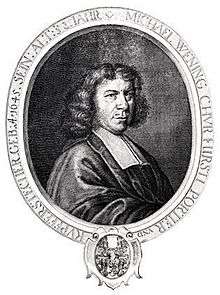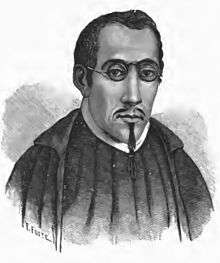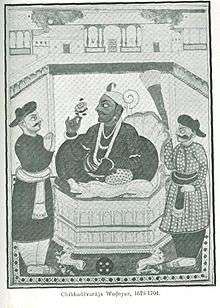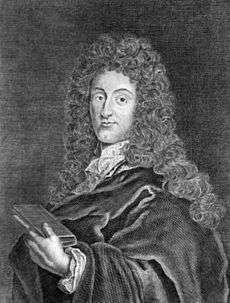1645
| Millennium: | 2nd millennium |
|---|---|
| Centuries: | 16th century · 17th century · 18th century |
| Decades: | 1610s · 1620s · 1630s · 1640s · 1650s · 1660s · 1670s |
| Years: | 1642 · 1643 · 1644 · 1645 · 1646 · 1647 · 1648 |
| 1645 by topic: | |
| Arts and Science | |
| Architecture - Art - Literature - Music - Science | |
| Lists of leaders | |
| Colonial governors - State leaders | |
| Birth and death categories | |
| Births - Deaths | |
| Establishments and disestablishments categories | |
| Establishments - Disestablishments | |
| Works category | |
| Works | |
| Gregorian calendar | 1645 MDCXLV |
| Ab urbe condita | 2398 |
| Armenian calendar | 1094 ԹՎ ՌՂԴ |
| Assyrian calendar | 6395 |
| Bengali calendar | 1052 |
| Berber calendar | 2595 |
| English Regnal year | 20 Cha. 1 – 21 Cha. 1 |
| Buddhist calendar | 2189 |
| Burmese calendar | 1007 |
| Byzantine calendar | 7153–7154 |
| Chinese calendar | 甲申年 (Wood Monkey) 4341 or 4281 — to — 乙酉年 (Wood Rooster) 4342 or 4282 |
| Coptic calendar | 1361–1362 |
| Discordian calendar | 2811 |
| Ethiopian calendar | 1637–1638 |
| Hebrew calendar | 5405–5406 |
| Hindu calendars | |
| - Vikram Samvat | 1701–1702 |
| - Shaka Samvat | 1566–1567 |
| - Kali Yuga | 4745–4746 |
| Holocene calendar | 11645 |
| Igbo calendar | 645–646 |
| Iranian calendar | 1023–1024 |
| Islamic calendar | 1054–1055 |
| Japanese calendar | Shōhō 2 (正保2年) |
| Javanese calendar | 1566–1567 |
| Julian calendar | Gregorian minus 10 days |
| Korean calendar | 3978 |
| Minguo calendar | 267 before ROC 民前267年 |
| Nanakshahi calendar | 177 |
| Thai solar calendar | 2187–2188 |
| Wikimedia Commons has media related to 1645. |

June 14: Battle of Naseby (re-enactment).
1645 (MDCXLV) was a common year starting on Sunday (dominical letter A) of the Gregorian calendar and a common year starting on Wednesday (dominical letter E) of the Julian calendar, the 1645th year of the Common Era (CE) and Anno Domini (AD) designations, the 645th year of the 2nd millennium, the 45th year of the 17th century, and the 6th year of the 1640s decade. As of the start of 1645, the Gregorian calendar was 10 days ahead of the Julian calendar, which remained in localized use until 1918.
Events
January–June
- January 3 – The Long Parliament adopts the Directory for Public Worship in England, Wales, Ireland and Scotland, replacing the Book of Common Prayer (1559). Holy Days (other than Sundays) are not to be observed.
- January 10 – Archbishop of Canterbury William Laud is executed for treason on Tower Hill, London.[1]
- January 14 – English Civil War: Fairfax is appointed Commander-in-Chief.
- January 29 – English Civil War: Armistice talks open at Uxbridge.
- February 2 – Battle of Inverlochy: The Covenanters are defeated by Montrose.
- February 15 – English Civil War: The New Model Army is officially founded.
- February 28 – English Civil War: Uxbridge armistice talks fail.
- March 4 – English Civil War: Prince Rupert leaves Oxford for Bristol.
- March 5 – Thirty Years' War: the Battle of Jankau, one of the bloodiest of the Thirty Years' War, in southern Bohemia, some 50 kilometres (31 mi) southeast of Prague, between the armies of Sweden and the Holy Roman Empire.
- March 31 – Fearing the spread of the Black Death (plague), Edinburgh Town Council prohibits all gatherings except weddings and funerals.
- April 3 – The House of Lords passes the Self-denying Ordinance, requiring members of the Parliament of England to resign commissions in the armed services.
- April 10 – Because of the plague, the Edinburgh town council orders that the college graduation ceremony should be brought forward so that students can leave the city (on November 19, teaching resumes in Linlithgow).
- April 23 (St George's Day) – English Civil War: One hundred and fifty Irish soldiers bound for service with King Charles I of England are captured at sea by Parliamentarians and killed at Pembroke in Wales.
- May 2 – Thirty Years' War: the Battle of Herbsthausen, or the Battle of Mergentheim, between French forces led by Marshal Henri de la Tour d'Auvergne, Vicomte de Turenne and the Bavarian army led by Franz von Mercy. The Bavarians catch the French unawares and heavily defeat them.
- May 9 – Battle of Auldearn: Scottish Covenanters are defeated by Montrose.
- June 1 – English Civil War: Prince Rupert's army sacks Leicester.
- June 10 – English Civil War: Oliver Cromwell is confirmed as the Lieutenant-General of the Cavalry.
- June 14 – English Civil War – Battle of Naseby: 12,000 Royalist forces are beaten by 15,000 Parliamentarian soldiers.
- June 28 – English Civil War: The Royalists lose Carlisle.
July–December
- July 2 – Fight at Alford, Aberdeenshire.
- July 10 – English Civil War – Battle of Langport: Cromwell wins in Somerset.
- July 21 – Qing dynasty regent Dorgon issues an edict ordering all Han Chinese men to shave their forehead and braid the rest of their hair into a queue identical to those of the Manchus.
- July 23 – Tsar Alexei Mikhailovich of Russia comes to the throne.
- August 13 – The Treaty of Brömsebro is signed between Sweden and Denmark–Norway, ending the Torstenson War and ceding Jemtland, Herjedalen, Gotland and Ösel (Saaremaa) to Sweden, which also holds the province of Halland for a period of 30 years as a guarantee.
- September 10 – English Civil War: Prince Rupert surrenders Bristol.
- September 13 – Battle of Philiphaugh: Covenanters defeat Montrose at Selkirk.
- September 24 – English Civil War – Battle of Rowton Heath: Parliamentarians defeat the Royalist cavalry.
- October 8–October 14 – English Civil War: Third siege of Basing House by Cromwell results in its destruction.
- October 8 – Jeanne Mance founds the Hôtel-Dieu de Montréal, the first hospital in North America.
- October 11 – English Civil War: Re-fortification of Bourne Castle in Lincolnshire against a threatened Royalist attack begins.
- November 20 The then Colegio de Santo Tomas, was elevated by Pope Innocent X into the University of Santo Tomas in his brief In Supreminenti. It has the oldest extant University Charter in the Philippines, as well as the whole of Asia.
Date unknown
- Bamana forces from Ségou invade the Mali heartland, destroying the Mali Empire after its 400 years as a unified state.
- The Stolberg-Wernigerode branch of the family of the counts of Stolberg and Wernigerode is founded in Germany.
- The Solar cycle enters the 70-year Maunder Minimum during which sunspots will be rare.[2]
- Wallpaper begins to replace tapestries as a wall decoration.
Births

Michael Wening born 11 July
Thomas Pereira born 1 November
January–March
- January 9 – Sir William Villiers, 3rd Baronet, English politician (d. 1712)
- January 22 – Isaac Addington, longtime functionary of various colonial governments of Massachusetts (d. 1715)
- January 28 – Gottfried Vopelius, German academic (d. 1715)
- February 9 – Johann Aegidius Bach, German organist, father of Johann Bernhard Bach (d. 1716)
- February 13 – Vere Fane, 4th Earl of Westmorland, English Earl (d. 1693)
- February 22
- Johann Ambrosius Bach, German musician (d. 1695)
- Johann Christoph Bach, German composer (d. 1693)
- February 24 – Francis I Rákóczi, Hungarian prince of Transylvania (d. 1676)
- March 17 – Peter Du Cane, the elder, British noble Huguenot refugee (d. 1714)
- March 20 – Arthur Brownlow, Anglo-Irish politician (d. 1711)
- March 25 – Marco Battaglini, Catholic bishop (d. 1717)
April–June
- April 3 – François Vachon de Belmont, Catholic bishop (d. 1732)
- April 11 – Juan del Valle y Caviedes, Spanish-born Peruvian poet (d. 1697)
- April 17 – James Olmsted, Connecticut politician (d. 1731)
- April 22 – Christine of Baden-Durlach, German noblewoman (d. 1705)
- May 3 – Thomas Maule, prominent Quaker in colonial Salem (d. 1724)
- May 4 – Thomas Alvey, Physician (d. 1704)
- May 14 – François de Callières, French writer and diplomat (d. 1717)
- May 15 – George Jeffreys, 1st Baron Jeffreys, British judge (d. 1689)
- May 22 – Charles Louis Simonneau, French engraver (d. 1728)
- June 13 – Giacomo Cantelmo, Roman Catholic cardinal (d. 1702)
- June 14 – Haquin Spegel, Swedish bishop (d. 1714)
- June 15 – Sidney Godolphin, 1st Earl of Godolphin, English politician (d. 1712)
July–September
- July 11 – Michael Wening, German engraver (d. 1718)
- July 27 – Frederik Johan van Baer, Dutch army commander (d. 1713)
- July 28 – Marguerite Louise d'Orléans, French princess (d. 1721)
- August 3 – August Kühnel, German composer and violist (d. 1700)
- August 5 – Charles Schomberg, 2nd Duke of Schomberg, English general (d. 1693)
- August 6 – Joseph Herrick, principal law enforcement officer in Salem (d. 1710)
- August 10 – Eusebio Kino, Italian Catholic missionary (d. 1711)
- August 14 – Carlos de Sigüenza y Góngora, Mexican academic (d. 1700)
- August 16 – Jean de La Bruyère, French writer (d. 1696)
- August 25 – Jacob van Wassenaer Obdam, Dutch general (d. 1714)
- August 30 – Giuseppe Avanzi, Italian painter (d. 1718)
- September 4
- Johannes Jakob Buxtorf, Swiss Hebraist (d. 1705)
- John North, fifth of fourteen children of Sir Dudley North (d. 1683)
- September 10 – Romeyn de Hooghe, Dutch Golden Age painter, engraver, and sculptor (d. 1708)
- September 21 – Louis Jolliet, French Canadian explorer known for his discoveries in North America (d. 1700)
- September 22 – Chikka Devaraja, Ruler of Mysore (d. 1704)
- September 25 – Naitō Kiyokazu, Daimyo who ruled the Takatō Domain (d. 1714)
- September 28 – Sir Edward Hales, 3rd Baronet, English politician (d. 1695)
October–December
- October 1 – John Alford, English politician (d. 1691)
- October 7 – Bernard Desjean, Baron de Pointis, French admiral and privateer (d. 1707)
- October 10 – Jakob Gronovius, Dutch classical scholar (d. 1716)
- October 21 – Christine Charlotte of Württemberg, Regent of East Frisia (d. 1699)
- October 26 – Aert de Gelder, Dutch painter (d. 1727)
- October 28 – John Philip II, Wild- and Rhinegrave of Salm-Dhaun, German noble (d. 1693)
- November 1 – Thomas Pereira (d. 1708)
- November 6 – Johann Gottfried von Guttenberg, Prince-Bishop of Würzburg (d. 1698)
- November 11 – Govert van der Leeuw, Dutch painter (d. 1688)
- November 12 – Georg Wolfgang Wedel, Physician, surgeon, botanist, chemist, philosopher (d. 1721)
- November 17 – Nicolas Lemery (d. 1715)
- November 30 – Andreas Werckmeister, German organist, music theorist, and composer (d. 1706)
- December 3 – Michał Stefan Radziejowski, Catholic cardinal (d. 1705)
- December 6 – Maria de Dominici, Maltese artist (d. 1703)
- December 14 – Jacob de Wilde, Dutch civil servant, art collector (d. 1721)
- December 24 – Hans Carl von Carlowitz, German forester (d. 1714)
- December 27 – Giovanni Antonio Viscardi, Swiss architect (d. 1713)
- unknown date – Gian Antonio Fumiani, Italian painter of the Baroque period (d. 1710)
- probable – Captain William Kidd, Scottish pirate (d. 1701)
Deaths
- January 10 – William Laud, Archbishop of Canterbury (b. 1573)
- April 16 – Tobias Hume, English composer (b. c. 1559)
- June 13 – Miyamoto Musashi, Japanese swordsman (b. c. 1584)
- July 13 – Marie de Gournay, French writer (b. 1565)
- July 15 – Michael I of Russia (b. 1596)
- July 17 – Robert Carr, 1st Earl of Somerset, Scottish politician (b. c. 1590)
- July 22 – Gaspar de Guzmán, Count-Duke of Olivares, Spanish statesman (b. 1587)
- August 6 – Lionel Cranfield, 1st Earl of Middlesex, English merchant (b. 1575)
- August 18 – Eudoxia Streshneva, tsaritsa of Russia (b. 1608)
- August 28 – Hugo Grotius, Dutch philosopher and writer (b. 1583)
- September 8 – Francisco de Quevedo, Spanish writer (b. 1580)
- December 12 – Giovanni Bernardino Azzolini or Mazzolini or Asoleni, Italian painter (b. c. 1572)
- Françoise-Marie Jacquelin, Acadian heroine (b. 1621)
References
- ↑ "Historical Events for Year 1645 | OnThisDay.com". Historyorb.com. Retrieved 2016-07-08.
- ↑ Eddy, John A. (June 1976). "The Maunder Minimum". Science. 192 (4245): 1189–1202. Bibcode:1976Sci...192.1189E. doi:10.1126/science.192.4245.1189. JSTOR 1742583. PMID 17771739.
This article is issued from Wikipedia - version of the 10/11/2016. The text is available under the Creative Commons Attribution/Share Alike but additional terms may apply for the media files.





